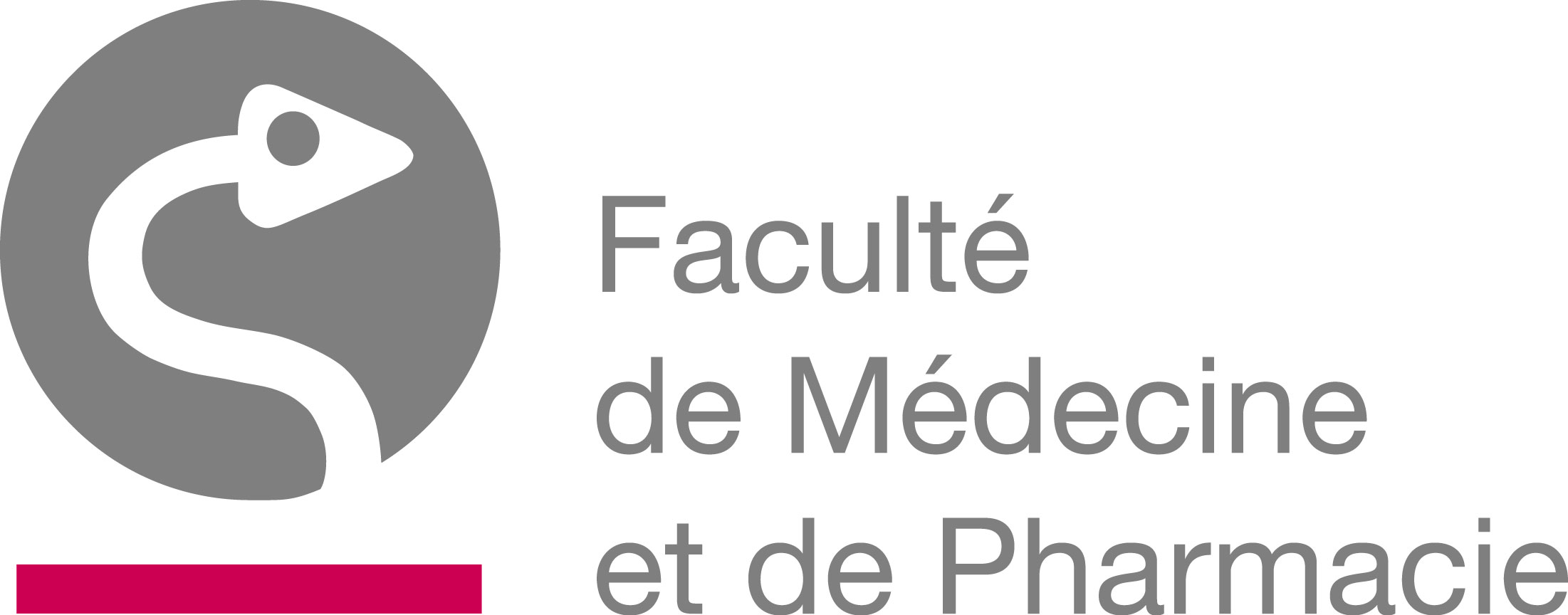 | Study programme 2018-2019 | Français | |
 | Nuclear Receptors | ||
Programme component of Master's Degree in Biomedicine Research Focus à la Faculty of Medicine and Pharmacy |
| Code | Type | Head of UE | Department’s contact details | Teacher(s) |
|---|---|---|---|---|
| UM-M1-BIOMFA-003-M | Optional UE | JOURNE Fabrice | M112 - Anatomie humaine et Oncologie expérimentale |
|
| Language of instruction | Language of assessment | HT(*) | HTPE(*) | HTPS(*) | HR(*) | HD(*) | Credits | Weighting | Term |
|---|---|---|---|---|---|---|---|---|---|
| Français | 15 | 0 | 0 | 0 | 0 | 2 | 2.00 | 1st term |
| AA Code | Teaching Activity (AA) | HT(*) | HTPE(*) | HTPS(*) | HR(*) | HD(*) | Term | Weighting |
|---|---|---|---|---|---|---|---|---|
| M-DOYM-023 | Nuclear sensors | 15 | 0 | 0 | 0 | 0 | Q1 | 100.00% |
| Programme component | ||
|---|---|---|
 | UM-M1-BIOMFA-001-M Cancer Cell Biology | |
 | UM-M1-BIOMFA-002-M Preclinical Cancer Models | |
Objectives of Programme's Learning Outcomes
- Scientific skills
- Implement and independently carry out an experimental approach, validate a model by comparing its predications with experimental results, assess the limitations of the model's validity, and identify sources or error.
- In response to situations and aware of the methodological limitations: - Use common techniques of biochemistry, molecular biology, cell biology, studies of tissues and organs (i.e. link a macroscopic phenomenon to microscopic processes). - Use an experimental device in a biological model, know and use the concepts and techniques of animal physiology.
- Professional integration skills
- Invest their knowledge and skills in professional scenarios
- Work in teams in different contexts including with people from different disciplines, integrate, fit in, collaborate, communicate and report
- Demonstrate their ability to research, analyse and synthesise: - Research, analyse, use different sources of information and materials related to biomedical sciences, format them to draw up a summarised document, produced and broadcast them on digital media. - Carry out a study, identify and raise an issue in a predefined context, build and develop an argument, interpret the data and results, develop an overview, and propose extensions. - Question themselves, think critically, debate, and defend their ideas.
- Master written and oral scientific expression. Be independent in writing and show that they can communicate their thoughts, reason and organise their knowledge
- Master scientific English: - Present scientific results, orally and in writing. - Answer scientific questions in English
- Scientific skills
- Implement and independently carry out an experimental approach, validate a model by comparing its predications with experimental results, assess the limitations of the model's validity, and identify sources or error.
- In response to situations and aware of the methodological limitations: - Use common techniques of biochemistry, molecular biology, cell biology, studies of tissues and organs (i.e. link a macroscopic phenomenon to microscopic processes). - Use an experimental device in a biological model, know and use the concepts and techniques of animal physiology.
- Compétences d'intégration professionnelle
- Invest their knowledge and skills in professional scenarios
- Work in teams in different contexts including with people from different disciplines, integrate, fit in, collaborate, communicate and report
- Demonstrate their ability to research, analyse and synthesise: - Research, analyse, use different sources of information and materials related to biomedical sciences, format them to draw up a summarised document, produced and broadcast them on digital media. - Carry out a study, identify and raise an issue in a predefined context, build and develop an argument, interpret the data and results, develop an overview, and propose extensions. - Question themselves, think critically, debate, and defend their ideas.
- Master written and oral scientific expression. Be independent in writing and show that they can communicate their thoughts, reason and organise their knowledge
- Master scientific English: - Present scientific results, orally and in writing. - Answer scientific questions in English
Learning Outcomes of UE
The course describes the critical role of nuclear receptors in cell signaling. It helps to understand the mechanism of steroid hormone actions and their related compounds. It also examines the breast cancer hormone therapy. The course will be teached in english.
Content of UE
The course describes the basics of cell communication and signaling; the discovery, structure and properties of the nuclear receptors; the interactions between nuclear receptors and other signaling pathways; the role of estrogen receptors in breast cancer and as therapeutic targets, as well as new nuclear receptor inhibition strategies.
Prior Experience
English
Type of Assessment for UE in Q1
- Written examination
Q1 UE Assessment Comments
Not applicable
Type of Assessment for UE in Q3
- N/A
Q3 UE Assessment Comments
Not applicable
Type of Resit Assessment for UE in Q1 (BAB1)
- Written examination
Q1 UE Resit Assessment Comments (BAB1)
Not applicable
Type of Teaching Activity/Activities
| AA | Type of Teaching Activity/Activities |
|---|---|
| M-DOYM-023 |
|
Mode of delivery
| AA | Mode of delivery |
|---|---|
| M-DOYM-023 |
|
Required Reading
| AA | |
|---|---|
| M-DOYM-023 |
Required Learning Resources/Tools
| AA | Required Learning Resources/Tools |
|---|---|
| M-DOYM-023 | PDF file of the course. |
Recommended Reading
| AA | |
|---|---|
| M-DOYM-023 |
Recommended Learning Resources/Tools
| AA | Recommended Learning Resources/Tools |
|---|---|
| M-DOYM-023 | Scientific articles. For example: Anbalagan, Nuclear Receptor Signaling, 2012. Bagamasbad, General and Comparative Andocrinology, 2011. de Leeuw, International Journal of Breast Cancer, 2011. Chang, Oncology Letters, 2012. Helsen, Molecular and Cellular Endocrinology, 2012. Karmakar, Journal of Biological Chemistry, 2013. Ratman, Molecular and Cellular Endocrinology, 2013. |
Other Recommended Reading
| AA | Other Recommended Reading |
|---|---|
| M-DOYM-023 | Not applicable |
Grade Deferrals of AAs from one year to the next
| AA | Grade Deferrals of AAs from one year to the next |
|---|---|
| M-DOYM-023 | Authorized |